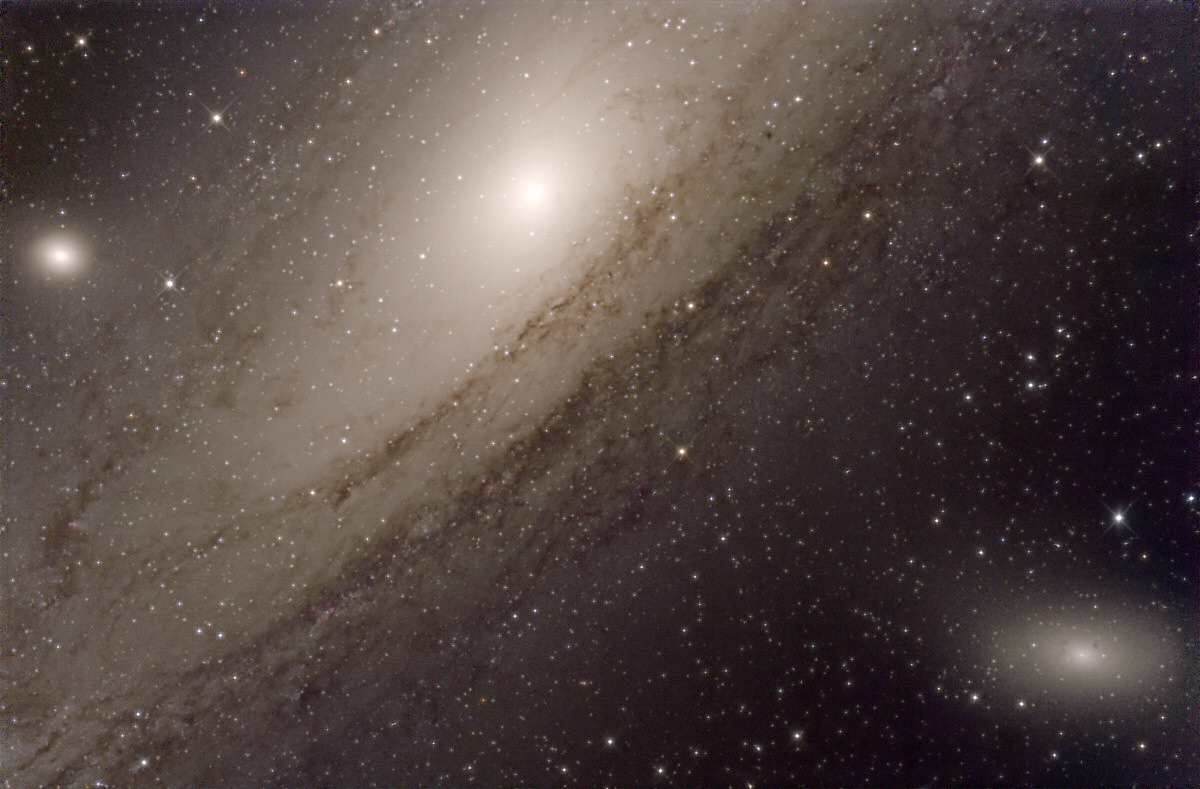
In the image above, north is to the right and east is up.
The Great Andromeda Galaxy is a spiral galaxy like our own (type Sb), but contains more stars, about 3 billion. At the distance of approx. 2.4 million light years it is a "neighbor", the next great spiral galaxy within our Local Group of galaxies. It is bright enough to be seen with the unaided eye from a semi-dark observing site.
From our point of view the Andromeda Galaxy is seen at a steep angle, only about 20 degrees from edge-on. The galaxy's spiral arms are therefore seen tightly wound and are not easily discernible, but they are marked by the dark dust lanes crossing the disk northwest of the galaxy's center. The diameter of M31 measures 3 degrees on the sky or 120.000 light years in space. Within the galaxy there are many nebulae and star clusters, but also a lot of dust and gas which is not emitting light and thus seen as dark material in front of a bright stellar background. Looking closely, many of these nebulae and star clusters can be seen in this image. Emission nebulae appear as red patches within the dark lanes.
M31 has 4 dwarf galaxy companions, two of them can be seen in this photograph. M32 is the compact dwarf exactly south of the great galaxy's center (near the left edge of this image); NGC 205 is more extended and located northwest of M31 (in the lower right corner).
 Part of M31 - Great Andromeda Galaxy, Wright-Newtonian photograph.
Part of M31 - Great Andromeda Galaxy, Wright-Newtonian photograph.
Exposure Data